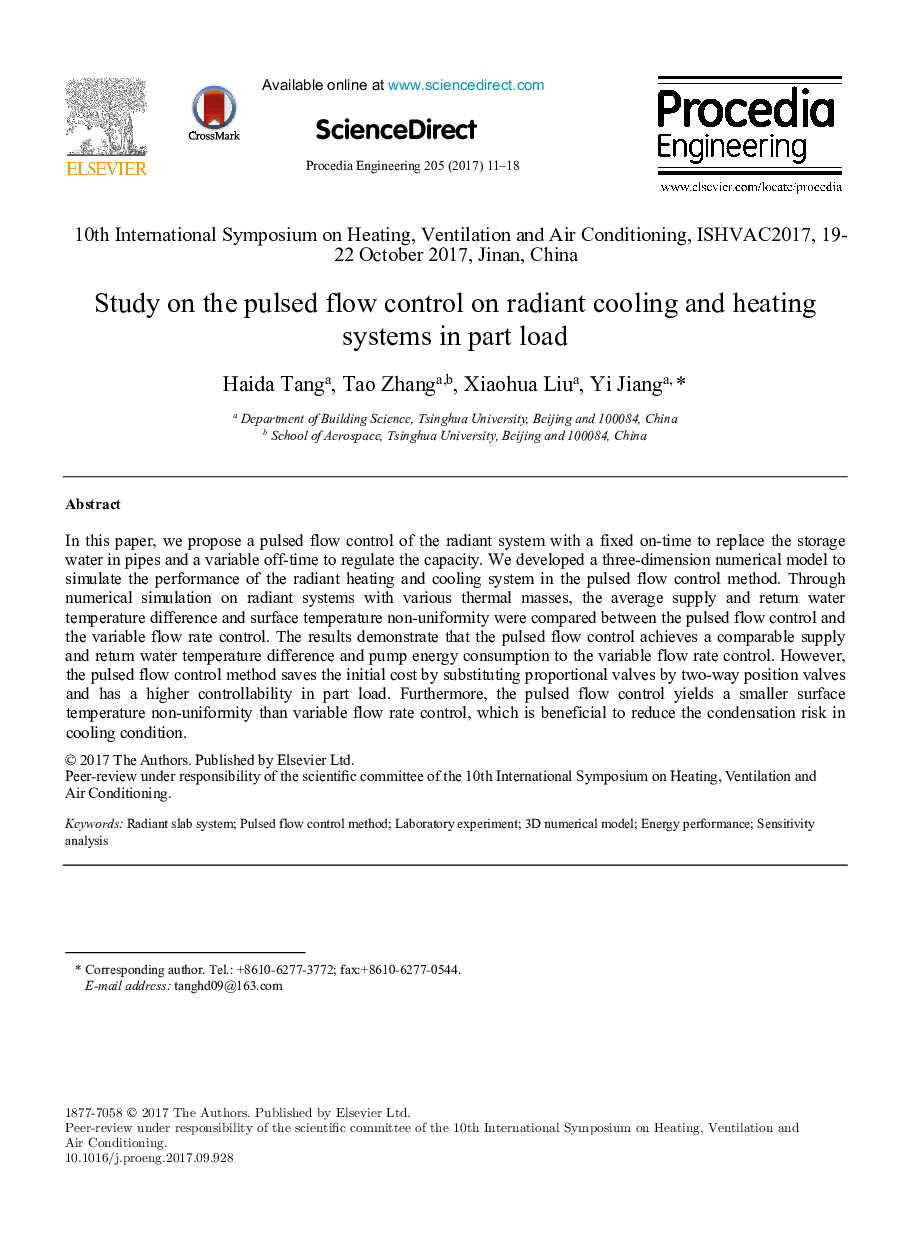| Article ID | Journal | Published Year | Pages | File Type |
|---|---|---|---|---|
| 7227622 | Procedia Engineering | 2017 | 8 Pages |
Abstract
In this paper, we propose a pulsed flow control of the radiant system with a fixed on-time to replace the storage water in pipes and a variable off-time to regulate the capacity. We developed a three-dimension numerical model to simulate the performance of the radiant heating and cooling system in the pulsed flow control method. Through numerical simulation on radiant systems with various thermal masses, the average supply and return water temperature difference and surface temperature non-uniformity were compared between the pulsed flow control and the variable flow rate control. The results demonstrate that the pulsed flow control achieves a comparable supply and return water temperature difference and pump energy consumption to the variable flow rate control. However, the pulsed flow control method saves the initial cost by substituting proportional valves by two-way position valves and has a higher controllability in part load. Furthermore, the pulsed flow control yields a smaller surface temperature non-uniformity than variable flow rate control, which is beneficial to reduce the condensation risk in cooling condition.
Related Topics
Physical Sciences and Engineering
Engineering
Engineering (General)
Authors
Haida Tang, Tao Zhang, Xiaohua Liu, Yi Jiang,
